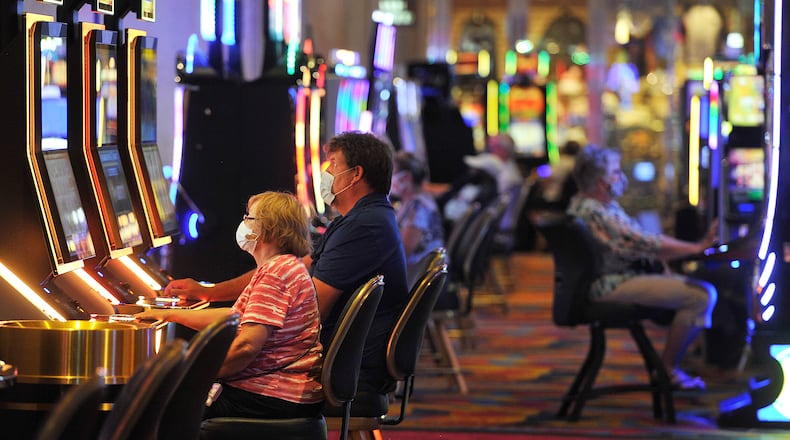Additionally, Hollywood Toledo’s $33.3 million in revenue is the highest monthly total ever posted by a casino, the commission reported.
“July’s $86 million in casino gaming revenue is a record; the previous statewide high was March 2013 ($84.3 million),” said Jessica Franks, a spokeswoman for the Ohio Casino Control Commission.
That figure only includes revenue from gaming, not food or beverage sales, she added.
Two factors might have been at work, Franks said. Detroit’s casinos had been closed, up until recent days, which likely contributed to Toledo’s record numbers, the single highest monthly total ever, she said.
“I also think there are limited opportunities for folks to spend their entertainment dollars,” Franks said. Theaters are closed and there are no concerts at the moment.
Right now, there’s no telling whether this kind of strength can be sustained going forward.
“It will be interesting to see what happens,” Franks said.
The Hollywood Gaming at Dayton Raceway Racino also did well, reporting a net win of $11,174,864, which is net gaming revenues remaining after payout of prizes and promotional credits.
By comparison, the net win in July 2020 was $9,812,928. (For all of fiscal year 2020, the Needmore Road racino reported total net wins of $88,892,833.)
July 2020 is the first month of fiscal year 2021, for the state’s racino reporting purposes. Last July was the first month of fiscal 2020.
While much of the Dayton racino’s older clientele has stayed away, probably for health concerns, the site still picked up “quite a bit” of younger clientele, said Tosh Anderson, a spokesman for the Dayton racino.
“Business has been a pleasant surprise in the month-and-a-half since reopening,” Anderson said. “We saw a good spike at the beginning based on pent-up demand, but have not seen that spike decrease as much as we expected.”
The July numbers are remarkable in part because even though the venues reopened, the experience was admittedly very different.
In Dayton, permitted racino capacity was halved, at least initially. Dayton Raceway’s fire code allow 3,400 patrons, but the facility limited capacity to 1,500 at one time, including employees, when it reopened June 19.
Floor decals on the racino floor marked out “social distances.” Slot machines were also spaced out — every other machine had been removed or disallowed for use. Guests were encouraged to wear masks. There was no live music, and the skybox was closed.
“This only truly limits our revenues at times of peak occupancy, Friday and Saturday evenings,” Anderson said. “But it has helped to create a comfortable and safe environment for our guests and team members all the time, which is the most important thing.”
Another COVID-19 restriction when the Dayton racino reopened: There was live no harness racing in Dayton, but simulcasts were offered.
However, Anderson said Monday that live harness racing is happening at Scioto Downs, and Dayton intends to go to live racing in September.
About the Author

